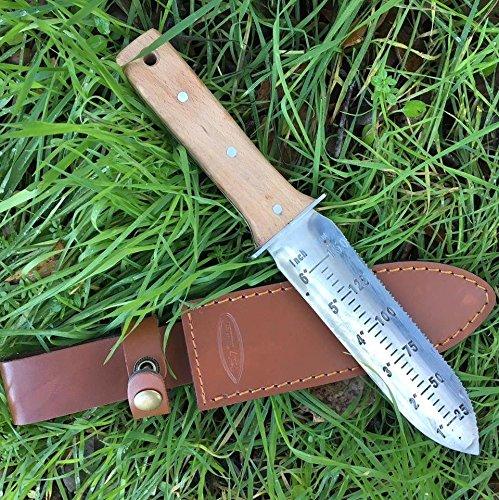Have you ever picked wild blackberries? Or delighted at the site of an edible mushroom on the forest floor? If so, you’re a forager! Gathering plants and fungi from wild places is a way to nourish yourself while also enhancing your relationship with the living world. But, it’s important to bring care and respect in exchange for what you pick for your plate or pot! Learn the basics of foraging and wildcrafting and you’ll start to see weeds and wild things in a whole new light.
Food foraging definition
Foraging for food means traversing and exploring the physical world in search of plants (or fungi) that provide sustenance. According to behavioral ecology theory, foraging affects an animal’s fitness because it plays an important role in an animal’s ability to survive and reproduce. It’s true that we humans seem to be able to survive and reproduce without foraging for food in uncultivated places. Still, we believe this ancient practice has a positive impact on physical, mental and emotional fitness!
Wildcrafting vs. Foraging
What’s the difference between wildcrafting and foraging? Not much; they’re two words for the same practice. More often, foraging is used in reference to gathering food. On the other hand, wildcrafting tends to apply to herbal and fungal medicines. However, this distinction is far from fixed. You’ll certainly hear of folks wildcrafting food or foraging for herbs. If herbs are what you’re after, check out our Wildcrafting and Medicine Making Intensive, offered twice a year; it covers some wild foods, too.
Is foraging for food illegal?
Foraging for food is illegal on private property that you don’t own, and in many public spaces. To determine if it’s legal where you’d like to harvest, check in with your local municipality (whoever is in charge of the space you’re interested in). When reaching out, consider framing your intention as invasive species removal. Indeed, many tasty edibles are invasives, so your foraging activity can play a role in stewardship. Some people believe that anti-foraging laws disproportionately impact Black, Indigenous and People of Color, along with rural citizens. For more on this, here’s an extensive article on the legalities of foraging.
Ethical foraging and giving thanks
One thing that draws many folks to foraging is the prospect of “free food.” Indeed, directly receiving the bounty of the Earth in our ultra-commodified culture is a welcome shift. However, just because a wild food doesn’t have a price tag on it doesn’t mean that it’s without value, or free for the taking. We encourage you to get to know the plants that you pick, their stories, migration routes, cultural contexts, and amazing qualities; their value is immense. Whenever you pick any plant, be sure to give thanks. Another being is giving its life for your life to continue, and that’s no small thing!
Additionally, it’s important to harvest in a way that cares for the overall ecosystem balance. This includes harvesting only plants that are in abundance, especially invasive species. It also means leaving spaces beautiful and tended, not digging up a bunch of something and walking away from a big mess. Finally, before you harvest or use any plant, learn about its life cycle and needs. This will help you to harvest in a way that ensures more for future eaters (or, less of a problematic plant for future native species in the case of invasives).
How to forage safely
Newsflash: some plants and fungi are poisonous to humans! If you eat a poisonous plant or mushroom, you could get sick or even die. Perhaps worse, if you serve poisonous plants or fungi to your friends and family, you could harm them.
Before you forage for food, learn proper plant identification. See our list of resources below to up your ID game.
Also, many so-called wastelands at the edge of the inhabited world, or along stream banks or roads may be sprayed with toxic pesticides. Be sure not to gather anything you plan to eat from an area that may be poisoned.
Foraging tools
Some basic foraging tools will make harvesting easier and more enjoyable. Depending on what you’re after, you may only need some of these.
- Sharp knife – this is especially helpful when harvesting wild mushrooms
- Scissors – the perfect tool for giving haircuts to chickweed and other wild greens
- Gloves – some wild foods poke or sting (brambles and stinging nettles are prime examples)
- Bag and/or basket – you’ll need somewhere to put your botanical booty
- Digging tool – we like a hori hori (garden knife) or a small hand trowel
- ID tools – field guides, loupe (magnifying glass)
- Stool or ladder – for reaching tree foods like fruits, leaves, and flowers
Resources for learning more about foraging
Here are some great resources to help you cultivate foraging finesse:
- 10 Spring Wild Foods You Can Find Almost Anywhere – An online class we offer that will get you gathering tasty spring greens in no time
- Best Books on Foraging – A fantastic list of the best books for self-study, compiled by our friends at the Chestnut School of Herbal Medicine; their blog has lots of other great articles on foraging, too
- Online Foraging Course: Edible and Medicinal Wild Herbs – The world’s most comprehensive (and beautiful) online program on foraging for food and medicine
-
Eat The Weeds YouTube Channel
– Fun and informative videos from “Green Deane,” who has been foraging for over 60 years
- Ediblewildfood.com – Field guide and blog all about edible wild foods, quite extensive with more content added frequently







